
William-Adolphe Bouguereau was a French academic painter. In his realistic genre paintings, he used mythological themes, making modern interpretations of classical subjects, with an emphasis on the female human body. During his life, he enjoyed significant popularity in France and the United States, was given numerous official honors, and received top prices for his work. As the quintessential salon painter of his generation, he was reviled by the Impressionist avant-garde. By the early twentieth century, Bouguereau and his art fell out of favor with the public, due in part to changing tastes. In the 1980s, a revival of interest in figure painting led to a rediscovery of Bouguereau and his work. He finished 822 known paintings, but the whereabouts of many are still unknown.
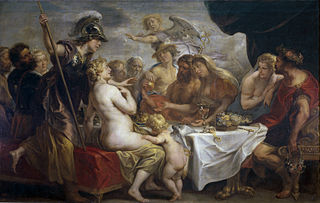
A figure painting is a work of fine art in any of the painting media with the primary subject being the human figure, whether clothed or nude. Figure painting may also refer to the activity of creating such a work. The human figure has been one of the constant subjects of art since the first stone age cave paintings, and has been reinterpreted in various styles throughout history.

Frank Weston Benson, frequently referred to as Frank W. Benson, was an American artist from Salem, Massachusetts known for his Realistic portraits, American Impressionist paintings, watercolors and etchings. He began his career painting portraits of distinguished families and murals for the Library of Congress. Some of his best known paintings depict his daughters outdoors at Benson's summer home, Wooster Farm, on the island of North Haven, Maine. He also produced numerous oil, wash and watercolor paintings and etchings of wildfowl and landscapes.

Abbott Handerson Thayer was an American artist, naturalist and teacher. As a painter of portraits, figures, animals and landscapes, he enjoyed a certain prominence during his lifetime, and his paintings are represented in the major American art collections. He is perhaps best known for his 'angel' paintings, some of which use his children as models.
Events from the year 1884 in art.
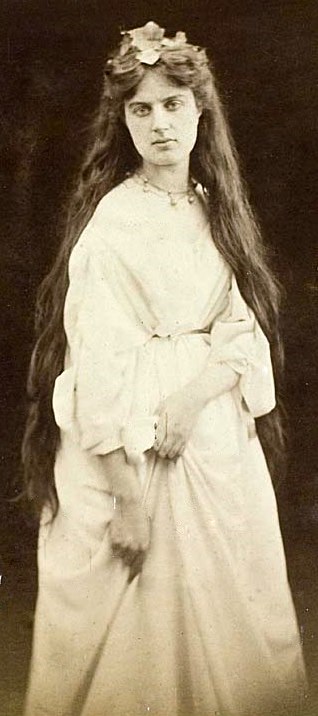
Marie Stillman was a British member of the second generation of the Pre-Raphaelite Brotherhood. Of the Pre-Raphaelites, she had one of the longest-running careers, spanning sixty years and producing over one hundred and fifty works. Though her work with the Brotherhood began as a favourite model, she soon trained and became a respected painter, earning praise from Dante Gabriel Rossetti and others.

Ellen Day Hale was an American Impressionist painter and printmaker from Boston. She studied art in Paris and during her adult life lived in Paris, London and Boston. She exhibited at the Paris Salon and the Royal Academy of Arts. Hale wrote the book History of Art: A Study of the Lives of Leonardo, Michelangelo, Raphael, Titian, and Albrecht Dürer and mentored the next generation of New England female artists, paving the way for widespread acceptance of female artists.

Dennis Miller Bunker was an American painter and innovator of American Impressionism. His mature works include both brightly colored landscape paintings and dark, finely drawn portraits and figures. One of the major American painters of the late 19th century, and a friend of many prominent artists of the era, Bunker died from meningitis at the age of 29.
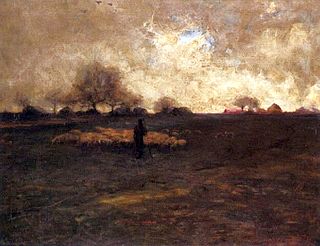
Thomas Millie Dow was a Scottish artist and member of the Glasgow Boys school. He was a member of The Royal Scottish Society of Painters in Watercolour and the New English Art Club.

Louise Jane Jopling was an English painter of the Victorian era, and one of the most prominent female artists of her generation.

Stevenson Memorial is a 1903 oil painting by the American artist Abbott Handerson Thayer, intended to commemorate the writer Robert Louis Stevenson. Though Thayer initiated several paintings with the intent of honoring Stevenson, Stevenson Memorial is the only version to survive the artist's revisions.

Jessica is an 1890 painting by Dennis Miller Bunker in the Museum of Fine Arts, Boston. It is considered one of Bunker's finest figure paintings, and has been described by art historian Theodore Stebbins as "among the most evocative" works of its time.
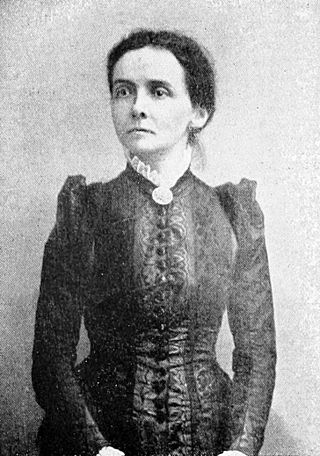
Gertrude Bloede was a United States poet. She used the pen name “Stuart Sterne” for her publications.

Polly Thayer (Starr) (1904–2006) was a Boston painter and pastel artist. When she was still in her twenties she became known for portraits and figure compositions in the tradition of the Boston School, but took a more Modernist approach after leaving academia. She became increasingly interested in conveying the invisible essences of landscape, flowers and living creatures as her career developed, and was noted for the skilled draftsmanship which provided the substructure of her work.

Elizabeth Okie Paxton (1878–1972) was an American painter, married to another artist William McGregor Paxton (1869–1941). The Paxtons were part of the Boston School, a prominent group of artists known for works of beautiful interiors, landscapes, and portraits of their wealthy patrons. Her paintings were widely exhibited and sold well.

Gladys Thayer (1886–1945) was an American painter and teacher.

Marie Danforth Page (1869–1940) was an American painter, mainly of portraits.

Ellen "Nelly" Thayer Fisher was an American botanical illustrator. Fisher exhibited her paintings at the National Academy of Design and other exhibitions. She was an active contributor to the exhibitions of the American Watercolor Society, beginning in 1872. In addition to being shown in galleries and exhibitions, her paintings of flora and fauna were widely reproduced as chromolithographs by Boston publisher Louis Prang.

The sisters Clara Welles Lathrop (1853–1907), Bessie Stebbins Lathrop (1854–1930) and Susanne (Susie) Lathrop (1860–1938) were artists and teachers in Northampton, Massachusetts, who exhibited and traveled widely. Clara was a painter, Bessie was a leather worker and woodcarver, and Susie illustrated publications. In addition to exhibiting in the U.S. and Europe, they organized intellectual salons at their Northampton studio and taught art at schools including Smith College.
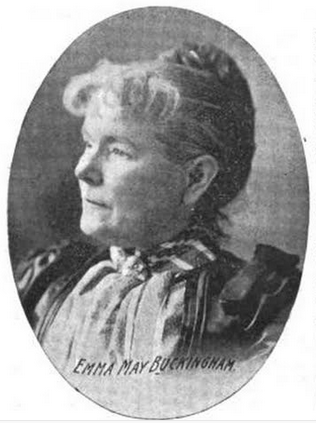
Emma Beach Thayer (1849-1924) was an American artist known for her floral paintings.




















